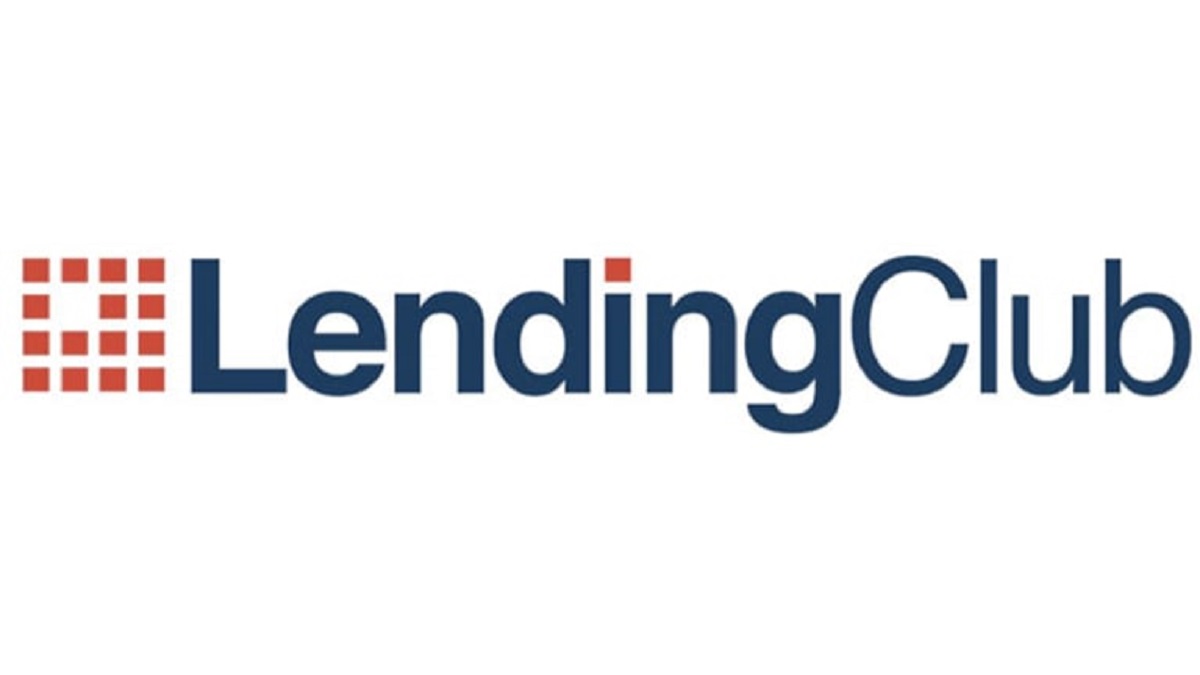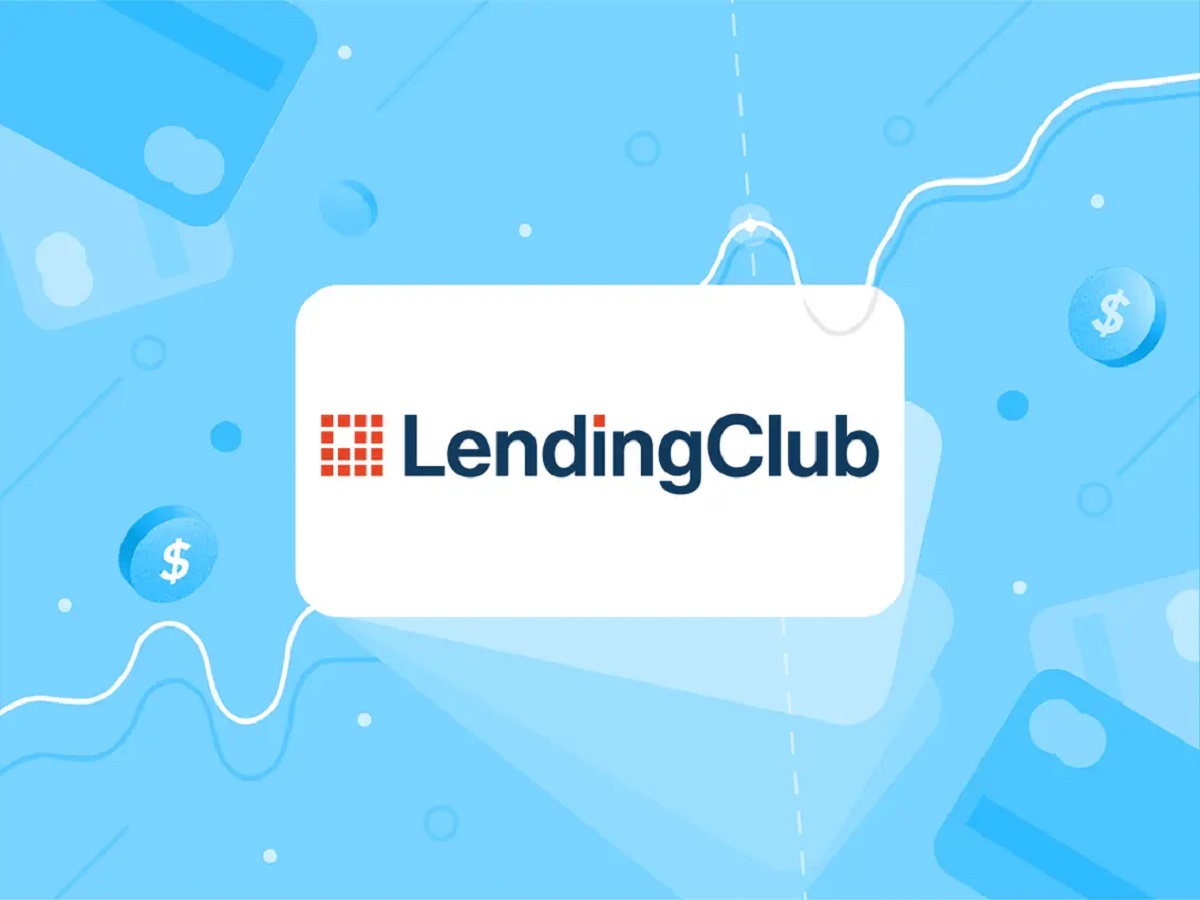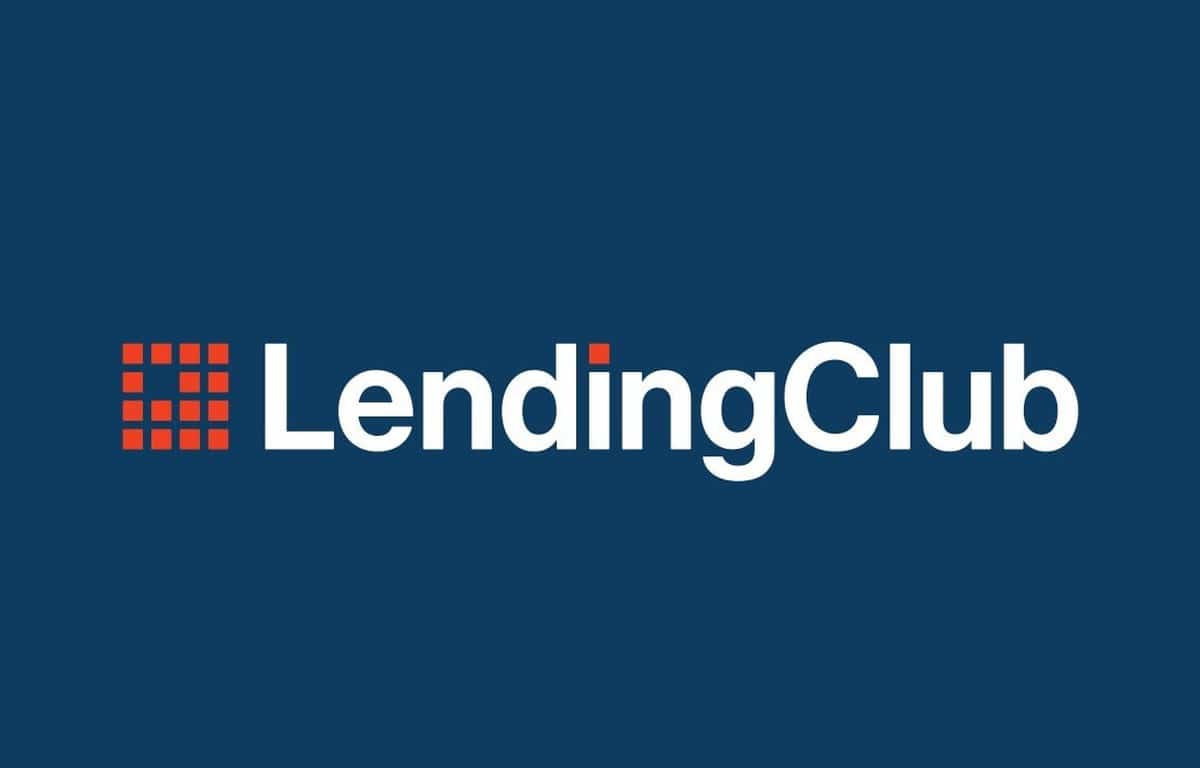Introduction
Welcome to the world of Lending Club! If you’re looking for an innovative way to invest or borrow money, Lending Club might just be the perfect platform for you. With its peer-to-peer lending model, Lending Club brings together investors and borrowers in a mutually beneficial arrangement. Whether you’re looking to grow your wealth or seeking a loan with competitive rates, Lending Club offers a convenient and transparent solution.
Founded in 2006, Lending Club is the largest peer-to-peer lending platform in the United States. It connects individuals and small businesses seeking loans with investors looking to earn attractive returns. By cutting out the traditional banking institutions, Lending Club streamlines the borrowing and investing process, making it a simpler and more efficient way to access funds or grow your investments.
Unlike traditional banks, Lending Club operates entirely online, making it accessible to anyone with an internet connection. This means you can participate in peer-to-peer lending from the comfort of your own home, at any time that suits you. Whether you’re an experienced investor or looking to dip your toes into the world of online lending for the first time, Lending Club provides a user-friendly interface and a wealth of resources to help you make informed decisions.
In this article, we will take a closer look at how Lending Club works, from creating an account to managing your investments. We’ll explore the step-by-step process of investing and borrowing on the platform and highlight the pros and cons of using Lending Club. By the end, you’ll have a solid understanding of Lending Club’s offerings and how you can benefit from this exciting peer-to-peer lending platform.
What is Lending Club?
Lending Club is an online marketplace that connects borrowers with investors through the process of peer-to-peer lending. It provides a platform for individuals and small businesses to borrow money at competitive interest rates, while offering investors the opportunity to earn attractive returns on their investments. Lending Club acts as an intermediary, facilitating these financial transactions and bringing together borrowers and investors in a transparent and efficient manner.
One of the key advantages of Lending Club is its ability to offer lower interest rates to borrowers compared to traditional lending institutions. By cutting out the middleman and connecting borrowers directly with individual investors, Lending Club eliminates many of the costs associated with traditional banking, allowing for more favorable loan terms. This means that borrowers can access the funds they need at rates that are often lower than what traditional banks can offer.
For investors, Lending Club offers the opportunity to diversify their portfolios and potentially earn higher returns. By investing in fractional portions of individual loans, investors can spread their risk across multiple borrowers, reducing the impact that any single default may have on their overall investment. Lending Club provides detailed information about each borrower’s creditworthiness, allowing investors to make informed decisions about the loans they choose to fund. With the ability to invest as little as $25 per loan, Lending Club offers a low-cost entry point for individuals looking to enter the world of peer-to-peer lending.
Lending Club also provides a range of other features and services to enhance the user experience. Their automated investing tool, known as “Lending Club Automated Investing,” allows investors to set specific criteria for loan selection and automatically invest in loans that meet those criteria. Additionally, Lending Club offers a secondary market where investors can buy and sell their loan notes, providing liquidity and flexibility to investors who may wish to adjust their investment strategy.
In summary, Lending Club is an online marketplace that facilitates peer-to-peer loans, connecting borrowers and investors in a transparent and efficient manner. It offers borrowers attractive interest rates and investors the potential for higher returns. With its user-friendly platform and range of features, Lending Club is a popular choice for both borrowers and investors looking to participate in the world of peer-to-peer lending.
How does Lending Club work?
Lending Club operates by connecting individual borrowers with investors who are willing to fund their loans. The platform uses a peer-to-peer lending model, which means that borrowers receive funds from multiple investors rather than a single financial institution. This not only provides borrowers with more diverse funding options but also gives investors the opportunity to diversify their investments across multiple loans.
The process of using Lending Club involves several steps, which we will outline below:
- Creating an account: To get started, borrowers and investors need to create an account on the Lending Club website. Borrowers will be asked to provide personal and financial information to determine their creditworthiness, while investors will need to verify their identity and link a bank account.
- Funding your account: Once the account is created, investors can transfer funds from their bank account into their Lending Club account. This is the money they will use to fund loans on the platform.
- Choosing investment options: Investors have the option to manually select which loans they want to fund or use Lending Club’s automated investing tool. This tool allows investors to set specific criteria, such as loan grade, loan term, and loan purpose, and automatically invest in loans that meet those criteria.
- Investing in loans: Once the investment criteria are set, Lending Club will present a list of loans that meet those criteria. Investors can then choose which loans they want to fund based on the borrower’s credit profile, loan purpose, and other relevant information.
- Managing your investments: After investing in loans, investors can track the performance of their investments through their Lending Club account. They can view details about the loans they have funded, including payment history and the principal and interest payments received.
- Receiving loan payments: As borrowers make their monthly loan payments, investors receive their share of the principal and interest payments proportionate to their investment in each loan. These payments are automatically deposited into the investor’s Lending Club account.
- Monitoring your portfolio: It’s important for investors to regularly monitor their portfolio and make any necessary adjustments. Lending Club provides data and statistics to help investors assess the performance of their investments and make informed decisions.
Lending Club provides a user-friendly interface, making it easy for borrowers to apply for loans and for investors to browse and select loans to fund. The platform also facilitates the transfer of funds between borrowers and investors, ensuring a seamless and efficient process.
By utilizing technology and cutting-edge algorithms, Lending Club streamlines the lending process, creating a win-win situation for both borrowers and investors. Borrowers can access funds at competitive rates, while investors can diversify their portfolios and potentially earn higher returns.
Step 1: Creating an account
The first step to getting started with Lending Club is creating an account. Whether you’re a borrower looking for a loan or an investor seeking to fund loans, the account creation process is simple and straightforward.
Here’s a breakdown of what you need to do:
- Borrowers:
- Visit the Lending Club website and click on the “Borrow” tab.
- Provide your personal information, including your name, address, and Social Security number.
- Submit financial details, such as your income, employment status, and monthly housing payment.
- Verify your identity by providing a valid form of identification, such as a driver’s license or passport.
- Agree to the terms and conditions of Lending Club and authorize a credit check.
- Once your account is created, you will receive your loan offers and can select the best option for your needs.
- Investors:
- Go to the Lending Club website and click on the “Invest” tab.
- Enter your personal information, including your name, address, and Social Security number.
- Verify your identity by providing a valid form of identification.
- Link your bank account to your Lending Club account for easy transfer of funds.
- Answer a few questions about your investment goals and risk tolerance.
- Agree to the terms and conditions of Lending Club.
- Once your account is created and funded, you can start browsing and investing in loans.
Lending Club takes the security and privacy of its users seriously. They use industry-standard encryption and secure protocols to safeguard your personal and financial information. Additionally, Lending Club has strict verification processes in place to prevent fraud and ensure the integrity of the platform.
It’s important to note that Lending Club has certain eligibility requirements for both borrowers and investors. Borrowers must have a minimum credit score, meet income requirements, and have a satisfactory credit history. Investors must meet certain income and net worth thresholds as defined by securities regulations.
By creating an account with Lending Club, borrowers gain access to a wide range of loan options, and investors have the opportunity to diversify their portfolios and potentially earn attractive returns.
Now that you have created your Lending Club account, you’re ready for the next step: funding your account.
Step 2: Funding your account
Once you have created your Lending Club account, the next step is to fund it. Funding your account is essential for both borrowers and investors to participate in the lending process. Lending Club offers a few options for funding your account, making it flexible and convenient.
Here’s how you can fund your Lending Club account:
- Borrowers:
- After creating your account, you will receive your loan offers from Lending Club.
- Choose the loan offer that best suits your needs and click on the “Accept Offer” button.
- Review the loan terms and confirm your desired loan amount.
- Provide your bank account information for the loan funds to be deposited.
- Once you have provided the necessary information, Lending Club will initiate the fund transfer to your bank account.
- Investors:
- Link your bank account to your Lending Club account, if you haven’t done so already.
- Choose the amount of money you want to transfer from your bank account to your Lending Club account. The minimum amount for investing is $25.
- Initiate the fund transfer from your bank account to your Lending Club account.
- Once the funds have been successfully transferred, your Lending Club account will reflect the available funds for investing in loans.
Lending Club uses industry-standard security measures to protect your financial information during the fund transfer process. Your personal and banking details are encrypted and stored securely to ensure the integrity of your account.
It’s important to note that while borrowers receive their loan funds directly in their bank accounts, investors’ funds are held in their Lending Club accounts and allocated towards funding loans they choose. The funds remain in the investor’s account until they are assigned to specific loans.
Funding your Lending Club account is a crucial step in the process, as it allows borrowers to access the loan funds and investors to have the capital necessary to fund loans of their choosing.
Now that your account is funded, you can move on to the next step: choosing the investment options that align with your goals and risk tolerance.
Step 3: Choosing investment options
Once you have funded your Lending Club account, the next step is to choose investment options that align with your investment goals and risk tolerance. Lending Club offers various investment options, allowing you to customize your portfolio based on your preferences and investment strategy.
Here’s how you can choose investment options on Lending Club:
- Assess your risk tolerance: Before selecting investment options, it’s important to assess your risk tolerance. Lending Club assigns a risk grade to each loan, ranging from A (lowest risk) to G (highest risk). Understanding your risk tolerance will help you determine which loan grades you are comfortable investing in.
- Consider your investment strategy: Lending Club offers two main investment strategies: manual investing and automated investing. Manual investing allows you to individually select loans to invest in, giving you full control over your investment decisions. Automated investing, on the other hand, lets you set specific criteria for loan selection, and Lending Club’s automated tool will automatically invest in loans that meet those criteria.
- Choose loan attributes: When manually selecting loans, you can browse through the available loans and consider various attributes such as loan purpose, borrower information, loan grade, and loan term. You can also review each borrower’s credit profile, employment history, and income information to make informed investment decisions.
- Set investment filters: If you opt for automated investing, you can set investment filters based on your desired loan characteristics. This can include loan grades, loan terms, loan purposes, borrower credit scores, and other parameters that align with your investment goals.
- Allocate funds: Once you have determined your investment options, you can allocate your funds accordingly. With Lending Club, you have the flexibility to invest as little as $25 per loan, allowing for diversification across multiple loans to mitigate risk.
Lending Club provides detailed information for each loan listing, including the borrower’s credit profile, stated purpose for the loan, loan grade, and interest rate. You can review this information and select loans that match your investment criteria and risk tolerance.
It’s important to note that investing in peer-to-peer loans carries risks, including the possibility of borrower defaults. Lending Club does its best to ensure loan quality and minimize risk by employing a rigorous credit screening process and providing investors with relevant borrower information.
By choosing investment options that align with your goals and risk tolerance, you can create a well-diversified portfolio and potentially earn attractive returns through Lending Club’s peer-to-peer lending platform.
Now that you have selected your investment options, you are ready to invest in loans and start growing your portfolio.
Step 4: Investing in loans
Now that you have chosen your investment options on Lending Club, it’s time to start investing in loans. Investing in loans allows you to allocate your funds across a diverse range of borrowers and potentially earn attractive returns.
Here’s how you can invest in loans on Lending Club:
- Access the loan marketplace: Navigate to the loan marketplace on the Lending Club website or platform. Here, you will find a list of available loans that meet your selected investment criteria.
- Review loan details: Take the time to review the details of each loan listing, including the borrower’s credit profile, loan purpose, loan grade, interest rate, and loan term. You can also get an overview of the borrower’s employment history, income, and other relevant information.
- Select loans: Based on your investment preferences and risk appetite, choose the loans that you want to invest in. You have the option to invest in fractional portions of loans, which means that you can spread your investment across multiple loans to diversify your portfolio.
- Investment amount: Decide how much you want to invest in each loan. Lending Club allows you to invest as little as $25 per loan, giving you the ability to diversify your investments across multiple borrowers and minimize risk.
- Confirm your investment: Once you have selected the loans and determined the investment amount, confirm your investment. Lending Club will deduct the specified investment amount from your available funds and allocate it towards the chosen loans.
- Monitor your investments: After investing in a loan, you can monitor its performance through your Lending Club account. Track monthly payments, principal, and interest payments received, and assess the overall performance of your investments.
While investing in loans offers the potential for attractive returns, it’s important to keep in mind that loans come with the risk of default. Lending Club provides credit information and loan details to help investors make informed investment decisions. By diversifying your investments across multiple loans and assessing each borrower’s creditworthiness, you can mitigate the risk associated with any single loan default.
Lending Club also offers a secondary market where investors can buy and sell their loan notes. This allows for greater liquidity and flexibility, providing investors with the opportunity to adjust their investment portfolios as needed.
By investing in loans on Lending Club, you become part of the peer-to-peer lending ecosystem, connecting borrowers and investors in a mutually beneficial arrangement. As borrowers repay their loans, you receive your share of the principal and interest payments, potentially generating consistent returns over time.
Now that you have successfully invested in loans, it’s time to move on to the next step: managing your investments and monitoring your portfolio.
Step 5: Managing your investments
Managing your investments is a crucial step in maximizing the potential returns and mitigating risks. With Lending Club, you have tools and resources at your disposal to monitor and manage your investments effectively.
Here are some key steps to manage your investments on Lending Club:
- Monitor loan performance: Regularly review the payment history and performance of the loans in your portfolio. Lending Club provides detailed information on each loan, including the borrower’s repayment status, payment history, and any past-due payments.
- Reinvest funds: As borrowers make their loan payments, you will receive principal and interest payments in your Lending Club account. Decide whether you want to reinvest these funds in new loans or withdraw them from your account. Reinvesting can help you maintain a steady stream of income and potentially compound your returns.
- Adjust your investment strategy: As you gain experience and assess the performance of your investments, you may want to adjust your investment strategy. Determine if any changes need to be made to your criteria or diversification strategy based on your objectives and risk tolerance.
- Consider selling loan notes: Lending Club provides a secondary market where you can sell your loan notes to other investors. If you need liquidity or decide to reallocate your investments, you have the option to sell your existing investments on the secondary market.
- Stay informed: Stay updated with the latest news and updates from Lending Club. The platform provides educational resources, webinars, and blogs that can help you make better-informed investment decisions.
- Consult with professionals: If you have specific investment goals or need guidance, consider consulting with financial professionals who specialize in peer-to-peer lending or investment strategies.
Lending Club’s online platform provides intuitive tools and a user-friendly interface to help you manage your investments efficiently. You can access your account information, view detailed loan information, track payment history, and analyze the performance of your portfolio, all in one place.
It’s important to remember that like any investment, investing in peer-to-peer loans carries risks. Stay vigilant and proactive in monitoring your investments and make adjustments as necessary. Regularly reviewing your portfolio’s performance can help you make informed decisions and optimize your returns.
By actively managing your investments on Lending Club, you can stay in control of your portfolio and optimize your chances of achieving your investment goals.
Now that you have a clear understanding of managing your investments, let’s move on to the next step: receiving loan payments.
Step 6: Receiving loan payments
One of the key benefits of investing in loans through Lending Club is the opportunity to receive regular payments from borrowers. As borrowers make their monthly loan payments, you, as an investor, will receive your share of the principal and interest payments.
Here is how the process of receiving loan payments works on Lending Club:
- Loan payment schedule: Each loan has a specified payment schedule, typically consisting of monthly payments. The borrower is responsible for making these payments according to the agreed-upon terms.
- Principal and interest payments: When borrowers make their loan payments, the funds are distributed to the investors who have invested in that particular loan. As an investor, you will receive your proportionate share of the principal and interest payments based on your investment in the loan.
- Automated payment processing: Lending Club handles the automated payment processing, making it convenient for both borrowers and investors. Once the loan payments are received from borrowers, Lending Club automatically distributes the funds to the respective investors’ Lending Club accounts.
- Payment distribution: The principal and interest payments received from borrowers are deposited directly into your Lending Club account. These payments can be reinvested in new loans, withdrawn to your linked bank account, or used to purchase loan notes on the secondary market.
- Payment tracking: Lending Club provides comprehensive tools and reporting capabilities to help you track your loan payments and overall portfolio performance. You can view the payment history, track the total amount of principal and interest received, and analyze the performance of your investments.
It’s important to note that while Lending Club strives to ensure timely loan payments from borrowers, there is a risk of borrower default. In the event of a default, Lending Club takes appropriate collection actions to recover the outstanding amount on behalf of investors.
Receiving regular loan payments can provide a steady stream of income and contribute to the growth of your investment portfolio. You can choose to reinvest the received payments in new loans to compound your returns or withdraw the funds to your linked bank account to use as desired.
With Lending Club’s automated payment processing and robust reporting tools, receiving loan payments is made easy and hassle-free. You can track the progress of your investments and make informed decisions based on the performance of your portfolio.
Now that you understand the process of receiving loan payments, let’s move on to the final step: monitoring your portfolio.
Step 7: Monitoring your portfolio
Monitoring your portfolio is a critical step in managing your investments effectively on Lending Club. By regularly monitoring your portfolio, you can assess its performance, make informed decisions, and optimize your investment strategy.
Here’s how you can monitor your portfolio on Lending Club:
- Track loan performance: Review the performance of the loans in your portfolio. Lending Club provides detailed information about each loan, including payment history, remaining principal balance, interest received, and any past-due payments. By tracking the performance of your loans, you can identify any potential issues and take appropriate action.
- Analyze portfolio diversification: Evaluate the diversification of your portfolio across different loans and borrowers. Assess the distribution of your investments across loan grades, loan terms, and loan purposes. Diversification can help spread risks and potentially improve the overall stability of your portfolio.
- Utilize reporting tools: Lending Club offers a range of reporting tools and data analytics to help you assess the performance of your investments. These tools include detailed account statements, visual charts, and performance statistics. Utilize these resources to gain insights into your portfolio performance and identify any areas that may require adjustments.
- Review investment strategy: Regularly assess your investment strategy to ensure it aligns with your goals and risk tolerance. Evaluate the criteria you have set for loan selection and consider tweaking or refining them based on the performance of your portfolio. Stay informed about industry trends and market conditions that may impact your investment strategy.
- Stay updated with platform news: Lending Club provides updates, news articles, and educational resources to help you stay informed about the platform and the peer-to-peer lending industry. Take advantage of these resources to enhance your understanding and make better-informed investment decisions.
- Consider professional guidance: If you need assistance or have specific investment goals, consult with financial professionals who specialize in peer-to-peer lending or investment strategies. They can provide personalized advice based on your financial situation and investment objectives.
Monitoring your portfolio on Lending Club plays a crucial role in assessing the performance of your investments and optimizing your returns. By staying informed, analyzing data, and making proactive decisions, you can enhance the potential for success in your peer-to-peer lending journey.
Remember that investing in peer-to-peer loans carries risks, including the potential for borrower defaults. It’s important to regularly review and adjust your portfolio to mitigate these risks and make the most of your investment opportunities.
By actively monitoring your portfolio on Lending Club, you can stay on top of your investments, make informed decisions, and work towards achieving your financial goals.
Now that you have learned about monitoring your portfolio, you are well-equipped to navigate the world of peer-to-peer lending on Lending Club.
Pros and Cons of Using Lending Club
Lending Club offers a unique and innovative platform for both borrowers and investors, providing various benefits and opportunities. However, like any financial service, there are also potential drawbacks to consider. Let’s explore the pros and cons of using Lending Club:
Pros:
- Competitive interest rates for borrowers: Lending Club’s peer-to-peer lending model allows borrowers to access loans at competitive interest rates, often lower than those offered by traditional banks.
- Attractive returns for investors: Investors on Lending Club have the potential to earn attractive, risk-adjusted returns on their investment portfolios, especially when diversifying across multiple loans.
- Diversification opportunities: With Lending Club, investors can spread their investments across numerous loans, reducing the impact of any single borrower default and increasing portfolio diversification.
- User-friendly platform: Lending Club offers a user-friendly interface, making it easy for borrowers and investors to navigate the platform, review loan listings, and manage their accounts.
- Transparent loan information: Lending Club provides detailed loan information, including borrower credit profiles, loan grades, and historical performance, empowering investors to make informed investment decisions and assess risk.
- Secondary market: Lending Club’s secondary market allows investors to buy and sell their loan notes, providing liquidity and flexibility for those who may need to adjust their investment portfolios.
Cons:
- Potential for borrower defaults: As with any lending platform, there is the risk of borrower defaults. While Lending Club has measures in place to mitigate this risk, it’s important to be aware that there is no guarantee of full loan repayment.
- Illiquidity during loan terms: Once invested in a loan, investors generally cannot access their funds until the loan term is completed, limiting liquidity during this period.
- Regulatory constraints: Lending Club operates within a regulated environment, and changes in regulations could impact the platform’s operations, potentially affecting the availability of loans or investment opportunities.
- Investment risk: Investing in peer-to-peer loans carries a degree of investment risk. Investors should carefully assess their risk tolerance and diversify their investments accordingly to mitigate potential losses.
- Limited control over loan selection: While Lending Club provides loan information and ratings, investors have limited control over the exact loans they can invest in, as loans may be fully funded by other investors before they can be allocated.
- Tax considerations: Investors should be aware of the tax implications of investing through Lending Club, including potential reporting requirements and the impact on taxable income.
Understanding the pros and cons of using Lending Club is crucial for both borrowers and investors. By carefully considering these factors and conducting thorough research, individuals can make informed decisions that align with their financial goals and risk tolerance.
Now that you have explored the pros and cons, you can make a well-informed decision about whether Lending Club is the right platform for your lending or investment needs.
Conclusion
Lending Club offers a compelling peer-to-peer lending platform that brings together borrowers and investors in a mutually beneficial arrangement. With competitive interest rates for borrowers and the potential for attractive returns for investors, Lending Club has transformed the lending landscape.
For borrowers, Lending Club provides a convenient and transparent way to access funds at competitive interest rates. By bypassing traditional banking institutions, borrowers can enjoy a streamlined lending process and potentially save on interest expenses.
Investors, on the other hand, have the opportunity to diversify their portfolios and potentially earn higher returns compared to traditional investment vehicles. With the ability to invest in fractional portions of loans, investors can spread their risk across multiple borrowers and optimize their investment strategies.
However, it’s important to acknowledge the risks associated with using Lending Club. The potential for borrower defaults and the limited liquidity during loan terms should be considered by both borrowers and investors. Additionally, regulatory constraints and the need for careful loan selection and portfolio management should not be overlooked.
By following the step-by-step process of creating an account, funding your account, choosing investment options, investing in loans, managing your investments, receiving loan payments, and monitoring your portfolio, you can navigate the Lending Club platform more effectively.
Whether you’re a borrower looking for a loan or an investor seeking to grow your wealth, Lending Club offers a convenient and innovative solution. By understanding the pros and cons and engaging in sound financial decision-making, you can make the most of the opportunities presented by Lending Club.
Remember, it’s essential to conduct thorough research, assess your financial goals and risk tolerance, and consult with professionals if needed. With careful consideration and prudent investment strategies, Lending Club can be a valuable tool in achieving your financial objectives.

























